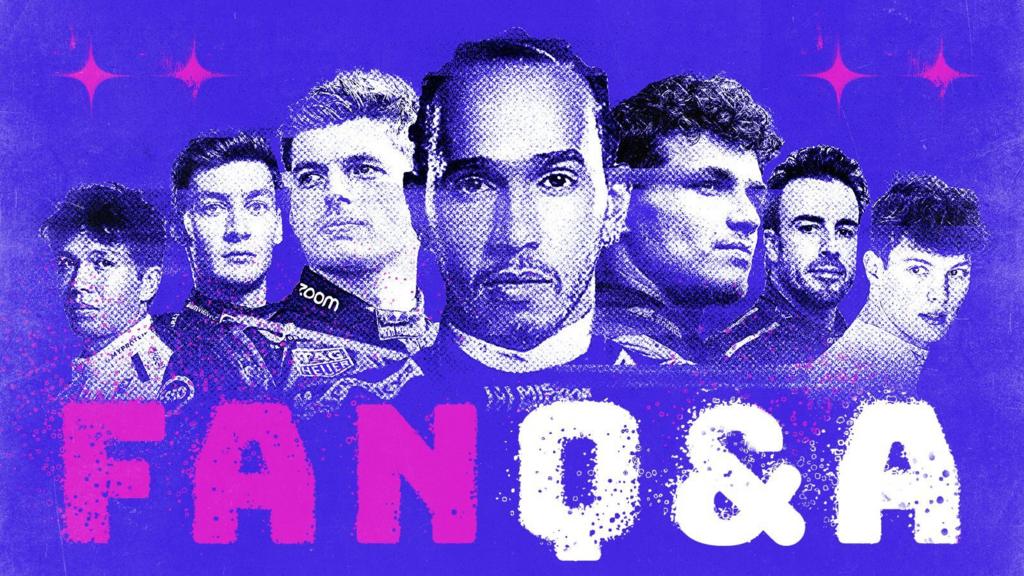McLaren’s Oscar Piastri secured his fifth victory of the season at the Spanish Grand Prix, outpacing teammate Lando Norris.
However, the race’s defining moment was a controversial incident involving Max Verstappen in the closing laps.
Verstappen appeared to intentionally collide with George Russell’s Mercedes, shortly after an off-track incident during their battle for position.
Following the Barcelona race, BBC Sport F1 correspondent Andrew Benson addresses your questions.
Should Max Verstappen have received a harsher penalty for his actions? Deliberately ramming another driver feels like a race-ban offense in the past – John
Opinions on this will vary.
Post-race, many within Formula 1 felt Verstappen’s contact with Russell’s Mercedes was unacceptable. He has since acknowledged his actions were “wrong and shouldn’t have happened”.
Asked about a potential disqualification (black flag), Russell stated: “If it was deliberate, absolutely. You can’t intentionally crash into another driver. We risk our lives, and while cars are safer, we shouldn’t be complacent.”
The stewards imposed a 10-second penalty and three license points—a significant sanction.
Why was this considered less severe than Russell’s Monaco chicane incident (resulting in a drive-through penalty)?
The stewards’ decision didn’t address this, and an FIA spokesperson declined comment, citing the stewards’ independence.
Verstappen now sits one point away from a race ban. Another infraction in Canada or Austria will result in a race suspension.
Some points will later expire from his license.
Verstappen ‘let himself down’ with Russell collision
What are penalty points in F1 and how do they work?
Given the stewards’ inaction regarding Verstappen leaving the track, was Red Bull premature in ordering him to yield to Russell? – Danny
In retrospect, this was one of two Red Bull errors.
Following a stewards’ inquiry into the Turn One incident, Red Bull instructed Verstappen to cede the position.
Team principal Christian Horner cited “recent experience and incidents” as justification.
Verstappen maintained fourth place after using the escape road, believing Russell had forced him off track.
Horner noted contact with the FIA race control yielded no response, anticipating a penalty given the stewards’ involvement.
Horner added: “Was George in control? Would he have made the corner? We’ve seen many penalties this year. We expected a penalty, so we conceded the place.”
The stewards’ ruling stated Russell “momentarily lost control” and collided with Verstappen, who “didn’t deliberately leave the track.” No further action was taken.
In essence, they felt Verstappen was justified in retaining his position.
Two racing guidelines apply here. To be entitled to space, the overtaking car’s front axle must be “at least alongside the mirror…at the apex.” Russell met this criteria.
The car must also “be driven in a fully controlled manner.” The stewards deemed Russell hadn’t, an opinion shared by Verstappen.
Horner stated: “With hindsight, a mistake? Yes. Clearer direction from race control would be helpful. Teams struggle to judge based on precedents.”
Red Bull’s second error, Horner admitted, was pitting Verstappen for hard tires under the safety car, a decision Verstappen vehemently opposed.
Horner acknowledged they should have kept him on soft tires. “He’d have been passed by the McLarens. Leclerc? We worked with available data.”
Could a cycling accident, angry outburst, and poor performance signal the end for Lance Stroll at Aston Martin? – Peter
Questions remain, but one is answered: did Lance Stroll lose his temper in the Aston Martin garage after Saturday’s qualifying?
On Sunday, this journalist and a colleague asked an Aston Martin spokesperson about alleged equipment damage, swearing, and a garage exit. The spokesperson responded: “Lance was upset.”
Later, an Aston Martin source denied damage or swearing, but confirmed the core event.
This followed Aston Martin’s announcement of Stroll’s withdrawal due to hand/wrist pain, linked to prior surgery from a cycling accident.
Two interpretations exist.
Stroll’s anger (being 0.535 seconds slower than Alonso) suggests a commitment to success.
However, withdrawing due to this injury is unusual. Many race with injuries, including Stroll himself at the start of 2023.
Whether this marks the end for Stroll is unknown. His father owns the team and supports his F1 career.
Stroll consistently expresses commitment to F1 and Aston Martin.
Has McLaren addressed Lando Norris’ qualifying struggles? Is this the key difference between last year (Norris’ dominance) and this year (Piastri’s advantage)? – Tom
Norris acknowledges early-season qualifying issues, particularly a “numb” feeling from the front axle (per team boss Andrea Stella).
McLaren is working with Norris and implementing car upgrades.
Norris felt progress in Monaco (pole position). After qualifying second in Spain, he commented: “Speed was there. Sometimes laps don’t go perfectly. I’m happy with second.”
The driver dynamic remains a developing storyline.
Why did Ferrari keep Lewis Hamilton out so long before his second stop? He led Russell, then fell 10 seconds behind. What’s wrong with Ferrari’s strategy? – Mike
Ferrari team principal Frederic Vasseur didn’t address this directly. However, extending a stint is a common Spanish tactic to gain a tire advantage.
Russell was within undercut range when Mercedes pitted him. Ferrari’s strategy seems logical in this context.
Hamilton’s post-race dejection was more significant. He described his race as his “worst ever,” citing handling issues.
Hamilton’s pace deficit was concerning. He started ahead of Leclerc, though Leclerc’s qualifying was impacted by tire management.
Leclerc quickly overtook Hamilton, and in the following laps before his pit stop, Hamilton lost about four seconds.
Leclerc’s second stop left Hamilton ten seconds behind—not catastrophic, but below expectations.
Vasseur noted a late-race car issue affecting Hamilton.
“He led Russell for 70% of the race. We had a car issue in the final stint after the safety car. The result is poor, but he led Russell for 45 laps.”
Send us your question for F1 correspondent Andrew Benson
Spanish Grand Prix Review
Comments can not be loaded
To load Comments you need to enable JavaScript in your browser

